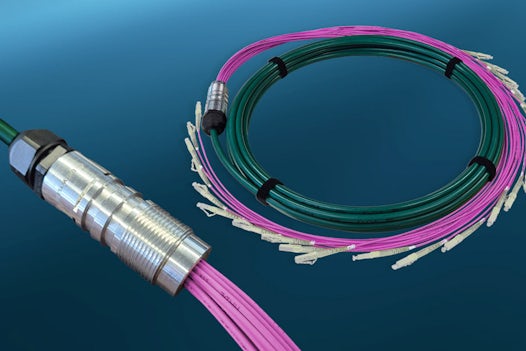
Equipped for the high-speed future
How to prepare for the new VSFF connectors in data centres
28 March 2023

A few years ago new very compact connectors for fibre optic cabling appeared on the market. These Very Small Form Factor (VSFF) connectors are marketed by the manufacturers under the names CS® and SN® (Senko) as well as MDC® (US Conec). All three are duplex connectors with two ceramic ferrules. All three allow an increase in packing density, both in patch panels and in active devices – thus saving rack space.
The new connectors were actually developed for future high transmission speeds of 100G applications and more in data centres, and for the native port-breakout function directly at the transceiver without multi-fibre connectors and without the corresponding fanout cable. This means that other high-speed applications are being developed. In future the port breakout will be realised without multi-fibre connectors, and the packing density at the switch will potentially be higher than today.
However, anyone wanting to prepare in good time for the migration or integration of the new high-speed applications into their data centre operation should not rack their brains today over whether it is better to fit the patch panels with CS, SN or MDC. The main question should rather be whether the existing infrastructure – by which is meant cabling based on LC and MPO/MTP – is suitable for the higher transmission speeds and bandwidths.
The key factor here is the quality of the end faces, i.e. the fibre ends in the connectors and the precision of the materials used in fibres, ferrules and guide sleeves. At data rates of up to 400 gigabits per second the insertion loss (IL) as well as the return loss (RL) also play an increasingly important role in ensuring stable transmission. Maximum precision at all the connection points – and connection components – of the channel is paramount.
In this respect the components in Datwyler’s DCS and HD-DCS families provide an excellent basis for future applications. Datwyler also recently added to its portfolio patch cables assembled with CS, SN and MDC connectors at one end, in order to reflect the increasing transmission speeds at the densely packed switches. These adapter cables make it possible to integrate the new applications with minimal effort.
Read the full article in Panorama No. 2/2022 (page 28 onwards). The data sheets of the available DCS patch cables can be found here >


